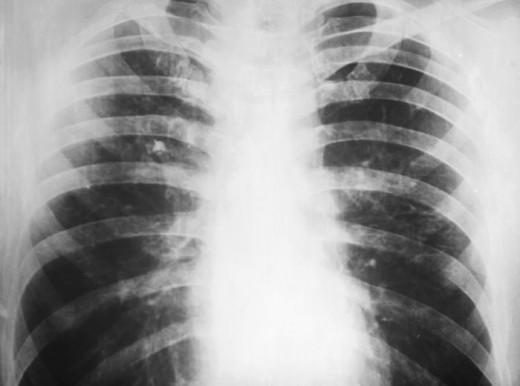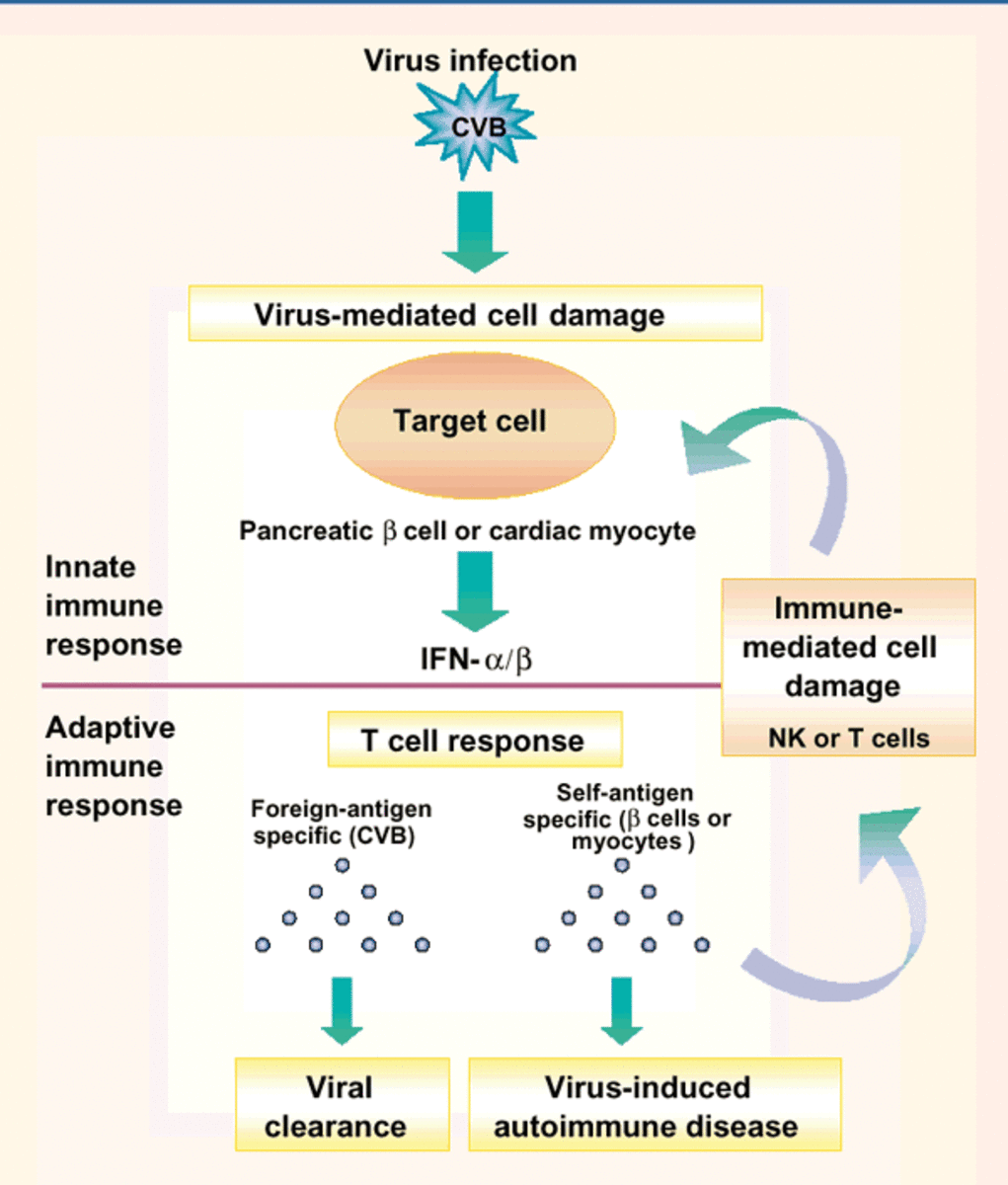The Flu: An Overview

The flu is a viral infection that is associated with many negative effects. Individuals affected by the flu are sick - often unable to get out of bed for a couple days. It is associated with high fever, extreme fatigue, cough and a myriad of other symptoms.
The flu, also known as influenza, is responsible for 41, 000 deaths every year in the United States. It is a very common disease as it affects 5-20% of the population annually[i].
Influenza is a viral illness that is preventable with vaccination. The Center for Disease Control (CDC) recommends that many groups of people get vaccinated. Unfortunately, there is significant under vaccination every year.
Influenza is broken down into two major classes: type A or type B. Testing done by health care providers can differentiate between the two types of influenza, but it is impossible to distinguish based on the symptoms.
In some people it is important to differentiate between the types of influenza, as different medications are more effective for the different types. It is also helpful for scientists to know what strain is causing the illness, to allow better overall management of the disease and better vaccination development.
Influenza is further subdivided based on antigens that inhabit the surface of the virus. It requires more intensive testing to make this further subdivision, but it also may be important in terms of treatment. The two surface antigens that are responsible for sub-typing influenza A are called hemagglutinin (H) and neuraminidase (N). Based on the numbers of surface antigens present, type A influenza is broken down into subgroups like H1N1 or H5N1.
The virus changes slightly from year to year. Consequently, the vaccination composition needs to change every year. A potential exists for the virus to dramatically change resulting in a strain of the virus that not only the vaccination will not recognize, but also the human immune system will not recognize. This could potentially result in a high mortality rate from influenza.
Influenza is transmitted by respiratory secretion. Common ways it passes from person to person include:
· Droplets of the virus are expelled when an infected person coughs or sneezes
· Someone touches a surface that is infected with the virus, then the person touches his mouth or nose and the virus enters into the respiratory system
· When a non-infected person shakes hands with someone who has the virus on his or her hand and than the non-infected person touches his or her mouth or nose the virus is transmitted into the respiratory system
Key points about influenza
· The disease lives in the patient for 1-4 days before the patient gets sick.
· The patient is most likely to pass on the infection 24 hours before the patient feels sick to when the symptoms are the worst.
· Most people are infectious for about 5-10 days after the onset symptoms.
· Some individuals with diseases of the immune system may be contagious for months after the infection.
How it presents
· Abrupt onset – the patient goes from feeling OK to very poorly in a short period of time.
· High fever is common, usually about 101-102 degrees Fahrenheit but may be as high as 104 degrees. Fever usually lasts 2 to 5 days, but may last up to a week.
· Non-productive cough
· Muscle aches
· Joints ache
· Feeling wiped out
· Sore throat
· Headache
· Runny or stuffy nose
· Eyes may be red or burn
· Children are more likely to have nausea or vomiting
· Older adults may present with mental status changes such as confusion
The person affected with influenza will feel the worst the first 3-4 days and then will notice a slow improvement. The person may have cough, weakness and just not feeling like themselves for up to 14 days after the onset of the infection.
The person with influenza will look tired; have flushed cheeks and hot skin.
Other causes of flu like symptoms
Influenza has the hallmark symptoms of an abrupt onset with fever and non-productive cough, but other illness need to be considered when these symptoms are present. Other disease to consider include:
· Other viral respiratory infections
· The common cold – usually starts with nasal congestion, runny nose, sneezing and sore throat}
· Strep throat {usually presents with sore throat, no cough, fever, weakness, pus on the tonsils and swollen lymph nodes in the neck}
· Pneumonia
· Bronchitis
· Lyme disease
Red flags
Certain symptoms warrant concern. The following is a list of items that warrant immediate evaluation by a health care provider.
· Chest pain with breathing
· Shortness of breath
· Swelling of the legs
· Confusion
· Persistent fever
· Severe headache, stiff neck or extreme sensitivity to light
Testing
Most of the time the diagnosis can be made after the doctor evaluates symptoms and does a physical exam. Testing can be used to confirm a diagnosis if the diagnosis is not certain.
Recently, there has been resistance of commonly used antiviral medications that are used to treat influenza. Consequently, patients may require testing to determine which strain of influenza is causing the illness so it can be treated appropriately.
Multiple methods are available to test for influenza. One of the most common methods is the use of a rapid test that is done in the office. It involves the doctor taking a long q-tip and obtaining a sample of nasal mucus. In other words, the health care provider sticks a q-tip up your nose and gets some snot. This is quite an unpleasant experience. This mucus is than tested for the influenza virus. Tests reveal results in 10-30 minutes.
This test also has the advantage of determining if influenza type A or type B is present. This is helpful in determining which antiviral medication will be most effective. It does not further determine which type of influenza A is present. This may reduce the health care providers ability to determine which medication is most appropriate.
Other tests are available to determine if the flu is present. Viral cultures are the best test, but it takes 1-10 days to get results, which is not ideal. As will be discussed in the treatment section, antiviral medications need to be started as soon as possible for them to be effective in treating the flu. The viral culture also has the advantage of picking up the diagnosis if another virus is causing the infection.
Rarely is blood work required in the management of influenza. It is warranted when the health care provider is considering a complication or an alternative diagnosis.
Pneumonia is a complication of influenza. It is also a diagnosis that may appear similarly to influenza. Health care providers may do a chest x-ray and/or draw blood to help differentiate between these two diagnoses. Lumbar punctures are sometimes done if the health care provider is concerned about meningitis (severe headache, stiff neck or extreme sensitivity to light).
Complications
Secondary bacterial infections are a worrisome complications. Concern over secondary bacterial infections from influenza is a major reason behind the age expansion on the recommendations for influenza vaccination. The 2008-9 influenza vaccination recommendation has expanded to include all children under the age of 19.
Staphylococcus aureus (S. aureus) was found to co-infect many of the children who had died from influenza – some cases were caused by methicillin-resistant S. aureus (MRSA).
Complications are more problematic in young children and older adults. Those with chronic medical problems are also at high risk for complications.
Below is a listing of common complications from influenza.
· Febrile seizures can occur in young children as high fever is a predominate symptom in flu.
· Pneumonia is a serious complication of influenza. It should be suspected in those who are getting worse with influenza with symptoms such as worsening cough, persistent fever, bluish discoloration around the lips or of the fingertips or shortness of breath. A chest x-ray should be attained in anyone with these symptoms.
· Those with chronic lung disease are at risk for respiratory failure after influenza.
· Dehydration
· Worsening of underlying heart disease
· Bronchitis
· Ear infections
· Inflammation of the heart or heart failure
· Muscle break down - rhabdomyolysis
· Older adults are at greater risk from pneumonia after coming down with influenza; this finding persists even if they got vaccinated[ii].
Prevention
Prevention is critical, especially in those at high risk. The number one way to prevent influenza is through annual vaccination. Vaccination is not perfect. It does not prevent every case of influenza and the shot may have some minor side effects, but it may be life saving. The vaccine prevents influenza in 70-90% of people when there is a good match between the virus that is circulating and the virus that is in the vaccine. Unfortunately, when there is a bad match it is between 0 and 50% effective6.
Influenza vaccine is very helpful in those with heart disease. It decreases cardiac events in those with established heart disease[iii]. Vaccination significantly reduces the risk of death from cardiac causes.
The Center for Disease Control is the organization that develops the recommendations for influenza vaccination that most health care providers go by. The current recommendations include the following people get vaccinated:
· Everyone over 50-years-old
· Everyone under 19-years-old (except those under 6 months)
· Those with chronic diseases such as chronic lung disease, asthma, heart disease, kidney disease, diabetes, anemia, an immunocompromised state such as cancer or HIV, and muscle or nerve disorders
· Nursing home residents
· Pregnant women
· People who live in crowded conditions
· Health care workers
Some individuals are not candidates of the influenza vaccination. The following are a list of people who should not get the vaccination.
· Severe allergy to chicken eggs
· Severe previous reaction to the influenza vaccination
· Those with a moderate to severe illness with fever should delay vaccination until feeling better
· History of Guillain-Barre syndrome within 6 weeks of getting an influenza vaccine
· Those less than 6 months old
The vaccination should should be recieved every year in October or November. Influenza season may start in November, but usually does not get ramped up until January. It does take two weeks for the vaccination to take effect. It is reasonable to give the vaccination later than November if it has not been received yet. The vaccine will protect throughout the flu season.
How to get vaccinated
Two methods exist for vaccination: injection and nasal spray. The injection is the more common method for vaccination. Some vaccinations are indicated for all ages while some are indicated for certain groups of people.
Most individuals need just one vaccination, but some need two. Children less than 9, who were vaccinated for the first time or who were vaccinated with only one dose in the 2007-2008 influenza season should get 2 doses (4 weeks apart) of the 2008-2009 influenza vaccine (as of this printing the guidelines for the 2009-10 influenza season have not be released). This applies to the injection and the nasal spray.
Injection is associated with some minor side effects. Soreness, redness or swelling at the injection site can occur. It usually starts about 12 hours after the shot and my last for 1-2 days. Some patients have a low-grade fever or generalized muscle aches, but this is less common than the local reactions.
The nasal spray is also linked to some side effects including: runny nose, headache, sore throat, cough, muscle aches and wheezing.
The nasal spray – FluMist – is not indicated for all people. It should be used only by those between the ages of 2 and 49 and should not be given to pregnant women or those who are at risk for complications from influenza. In adults the injection is more effectve than the nasal vaccination[iv]. Although the nasal vaccination may be more effective in children[v].
Other methods to prevent influenza include:
· When coughing and sneezing cover the mouth and nose
· Avoid contact with sick people
· Dispose of tissues that are soiled
· Wash hands regularly, carry a bottle of alcohol based hand-sanitizer and use frequently
· Avoid touching the nose, mouth or eyes.
Medications used in the treatment of influenza can also be used in the prevention of the illness in those who have been exposed to influenza. They are helpful when taken within 48 hours of exposure and are 70-90% effective at preventing influenza6. These medications should be taken for 10 days but longer treatment is needed in select situations.
Treatment
Treatment must be started soon when influenza is present. To be effective the medication needs to be started within 48 hours, but there is evidence to suggest that quicker treatment is even more beneficial.
Not everyone with influenza has to be treated, but certain groups of people should be treated. Those at high risk of a poor outcome or complications should be strongly considered.
Four medications are currently available in the treatment of influenza. As of the 2008-9 influenza season there is significant resistance noted to 3 of the 4 antiviral medications used to treat influenza.
The four medications for influenza are: Oseltamivir (Tamiflu), zanamivir (Relenza), amantadine (Symmetrel) and rimantadine (Flumadine). Resistance was noted to both amantadine and rimantadine since 2006, but as of 2008 there was signficiant resistance also noted to osteltamivir. Because of the increased resistance, zanamivir is now being used frequently in the treatment of influenza.
The benefit of antiviral medication is not overwhelming. If the medication is given within 48 hours of the onset of symptoms, the length of illness is reduced by one day[vi]. In addition, medications reduce the amount virus that is shed. Antiviral medications also reduce the risk of complications and death and are therefore more important to utilize in those at high risk.
High risk patients also my have a better response to antiviral medicaions. One study showed that the symptoms were reduced by 2.5 days in high risk individuals, but only 1.5 days in those who are normal risk[vii]. Another study showed that the severity of illness is also reduced. The severity was reduced by 40% in those who took the antiviral oseltamivir[viii].
Table 3: Flu Medications
Medication
Dose
Use
Side effects
Zanamivir (Relenza)
One puff taken twice a day for five days. Treatment is for those older than 6 years old; and for prophylaxis in those 5 and older.
Influenza A and B.
Should not be used by those with lung disease
Diarrhea; nausea; sinusitis; nasal signs and symptoms; bronchitis; cough; headache; dizziness; and ear, nose, and throat infections
Oseltamivir (Tamiflu)
Children over one – dose based on weight. Adults 75 mg twice a day for five days.
For influenza type A (but not for certain strains) and influenza type B. Take with food
Nausea and vomiting, confusion and abnormal behavior
Going into the 2009-10 year many questions remain. Will the strain be more more virulent? Will the vaccine match be as good? Will resistance increase? Will there be another outbreak of swine flu? It is therefore important that assure you take good prevenative measures agaist the flu.
Treating symptoms
Influenza makes people feel terrible. A large part of treating the flu is treating the symptoms. There are many interventions and medicaitons to help the patient feel better.
· Rest
· Maintaining hydration
· Providing humdification
· Treatment of fever, body and joint aches with medications to treat fever and pain
· Cough suppession
Non-drug treatments can go along way to promote comfort. Rest will help the body recover from the illness. Rest is usually a built in side effect of the flu. People who are afflicted with the flu are too ill to do anything other than rest for a few days.
Influenza is associated with fever. Fever increases the body’s need for water. It is therefore important to increase fluid intake in the face of fever. Adults should focus on increasing plain water, but any non-alcoholic or non-caffenated beverage will do. Infants should increase intake of breast milk or formula or an electrolyte replacement beverage such as Pedialyte.
Humidification is helpful in loosening congestion. A cool-mist humidifier is very helpful to run at night. When nasal congestion is prominate, the use of steam showers can help open nasal passages.
Ibuprofen or acetaminophen are two primary medicaions used to manage pain and fever. Aspirin is sometimes taken, but should not be used in those with a viral illness. Aspirin is especially dangerous in children as it increases the risk of Reye’s syndrome. This syndrome can also occur in adults but is rare.
As a general rule do not give aspirin to anyone under under 19 years old.
Cough in influenza is often dry. In addition to increasing hydration and using humidification, the use of medicatons to help loosen cough and get rid of mucus may help.
· Guaifenesin (Mucinex) can be helpful.
When cough interferes with sleep or is causing extreme discomfort the use of cough suppressants may be indicated. Reducing cough can be accomplished with multiple medications.
· Dextromethorphan (Robitussin) or Dextromethorphan polistirex(Delsym) has few negative effects but some individuals will have nausea, vomiting, constipation and some may experience drowsiness.
· Benzonatate (Tessalon Perles), a prescription medications, can be taken 3 times a day.
· Codeine solutions suppress cough but are a narcotic medication that are associated with nausea, vomiting, constipation, sedation, dizziness and falls. Some people may also get addicted to the medication. High doses are associated with reduced breathing.
Summary
Influenza is a contagious respiratory illness that is associated with patients feeling terrible. It can even lead to death. Managing symptoms will help improve comfort. The use of ibuprofen or acetaminophen is helpful in the management of the most bothersome symptoms. Influenza has an abrupt onset of fever, chills, malaise, cough and sore throat. Antiviral medications are used in the treatment of some patients with influenza, but are not a magic bullet. Vaccination is the best method to reduce the risk of the disease.
Questions to ask your health care provider about the flu
Before getting the flu
1. Am I at high risk for the flu?
2. Should I get the flu shot? When should I get the shot?
If you think you have the flu or your doctor tells you have the flu
3. Do I have the flu or another illness?
4. Do I need a test to tell if I have the flu?
5. Is there a medication that will help the flu?
6. Is there a medication that will help alleviate my symptoms?
7. How effective is the medication you are recommending?
8. What are the side effects of this medication?
9. Does the medication interact with any of my other medications?
10. What complications should I look out for and what symptoms will manifest?
[i] Center for Disease Control. Seasonal flu. Retrieved April 10, 2009, from: http://www.cdc.gov
[ii] Jackson ML, Nelson JC, Weiss NS et al. Influenza Vaccination and Risk of Community-Acquired Pneumonia in Immunocompetent Elderly People: A Population-based, Nested Case Control Study. Lancet 2008; 372(9639): 398-405.
[iii] Ciszewski A, Bilinska ZT, Brydak LB et al. Influenza Vaccination in Secondary Prevention from Coronary Ischemic Events in Coronary Artery Disease: FLUCAD Study. European Heart Journal 2008; 29: 1350-1358.
[iv] Wang Z, Tobler S, Roayaei J & Eick A. Live Attenuated or Inactivated Influenza Vaccines and Medical Encounters for Respiratory Illnesses Among US Military Personnel. JAMA 2009; 301: 945 - 953.
[v] Belshe RB, Edwards KM, Vesikari T, et al. Live Attenuated versus Inactivated Influenza Vaccine in Infants and Young Children. New England Journal of Medicine 2007; 115(1): 685-696.
[vi] Jefferson T et al. Antivirals for Influenza in Healthy Adults: Systematic Review. Lancet 2006; 367: 303-313.
[vii] MIST Group. Randomized Trial of Efficacy and Safety of Inhaled Zanamvir in Treatment of Influenza A and B Virus Infections. The MIST (Management of Influenza in the Southern Hemisphere Trialists) Study Group. Lancet 1998; 352(9144); 1877-1881.
[viii] Treanor JJ, Hayden FB, Vrooman PS et al. Efficacy and Safety of the Oral Neuraminidase Inhibitor Oseltamivir in Treating Acute Influenza: a Randomized Controlled Trial. US Oral Neuraminidase Study Group. JAMA 2000; 283(8): 1016-1024.



